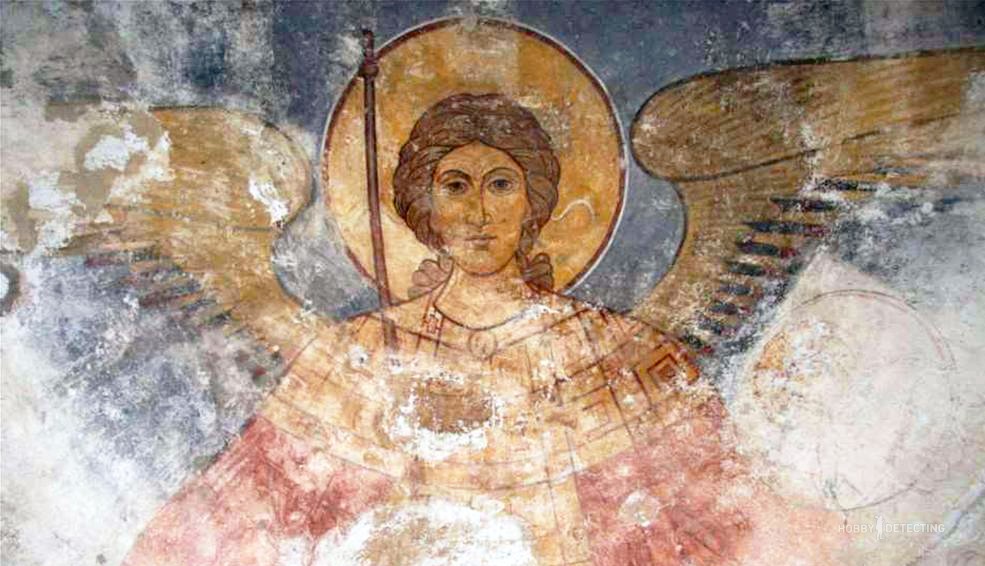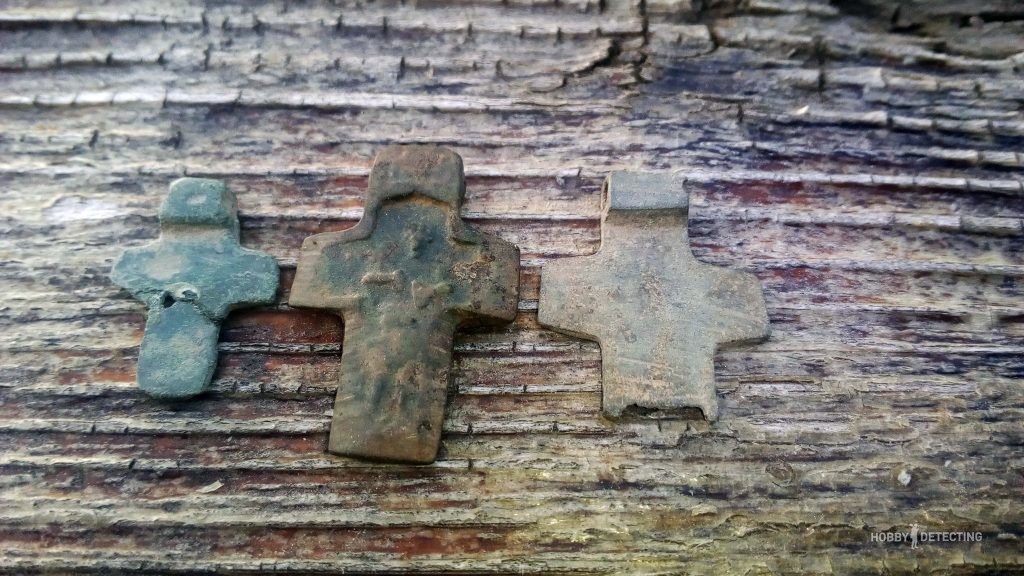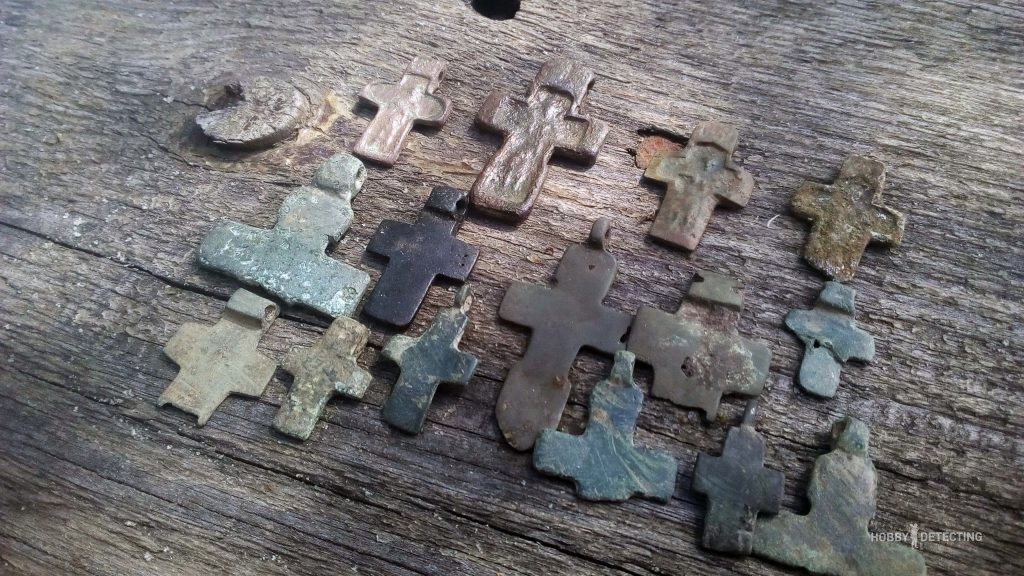Why was Archangel Michael “demoted” under Ivan III???
From the series “The History of Interesting Finds”

Crosses, like finds, are a common occurrence in our latitudes. Sometimes you can dig up a cop in a couple of hours. Typically this is the 19th century ubiquitous petals. With enamels, with blackening, there was even one silver one, but without hallmark and clamp. But, naturally, the older the find, the less common it is, and therefore is considered more interesting among colleagues, and can even go into your own collection. So it was with the cross that I found in a plowed field near an ancient village.
A double-sided pectoral cross, on one side a typical crucifix, on the other, a silhouette with a spear in hand was clearly visible. Archangel Michael. Then there was a new season of digging, a couple of tracts that had been dug out before me, where good and interesting crosses also came across at extreme depths. And here I noticed one detail. On the same crosses, the back side was ground off in one case. Moreover, it is thoroughly ground down. Up to 2/3 of the total thickness of the cross. And then I decided to go through my entire box with crosses that had not yet been inserted into the panel. And there was quite an interesting group, with obvious signs of mechanical cleaning of the back side.

And this was clearly becoming interesting. And this could indeed be some kind of historical mystery, the solution to which could become a very fascinating story. And that’s what happened. One of our blog readers wrote in the comments what was hidden at that distant time behind the symbol of Archangel Michael on the back of the pectoral cross.
This was in the 15th century. During the reign of Ivan III, all the appanage northern principalities completely lost their independence and the princes who ruled there became boyars under Emperor Ivan Vasilyevich. By the way, it was Ivan III who was called the Terrible by his contemporaries, but his grandson, whom we call the Terrible thanks to a French publicist, was called the Great by his contemporaries. So, only the Ryazan and Tver principalities retained relative independence. The sister of Ivan III, who was also the grandmother of the young Prince Ivan Ivanovich, ruled in Ryazan. So, only the Tver Principality could actually implement a more or less independent policy. Led by Prince Mikhail Borisovich.

And here you need to understand that Archangel Michael was then considered the heavenly patron of the Tver principality. And all the crosses where Michael is depicted on the back side are called “Tver” by modern collectors. And now we can guess that grinding off the image of the Archangel from pectoral crosses was a political matter.
Many sources write that Tver was at war with Moscow and Mikhail Borisovich lost the war, which is why the Muscovites captured Tver and Prince Mikhail had to flee to Poland. In principle, there was no war. Suspecting treason, it seems, Mikhail Tverskoy began to negotiate with the Polish king about an alliance. Ivan III gathered an army and approached Tver, the city surrendered without a fight, there was no robbery or violence. And Mikhail, realizing that the residents of Tver did not really want to fight for him, ran away in advance.
It was after this that the unspoken order came to grind off the images of Archangel Michael from pectoral crosses, and to remove icons from churches.

Now only one question remains unanswered. Why do instrumental search enthusiasts, including myself, find so many Tver crosses outside the lands of the Tver Principality? And here I can suggest two possible answers. The first is most likely because many native Tver residents, suspected of treason against Ivan III, or of some kind of political closeness to the former Tver prince, after the victory of the Muscovites, were exiled to various distant voivodeships of lands subordinate to Moscow. And already on the spot, from which of them such “oppositional” crosses were found, these crosses were ground off, getting rid of the image of the “disgraced” Archangel. It was impossible to completely destroy the cress itself – this was blasphemy, and to clean one side with a file or a sharpening stone was not considered a sin.
The second version includes the assumption that in the territories subordinate to Moscow, life was not easy for people. And the Tver Cross became a kind of symbol of internal protest. Something like the same white ribbons on cars, yellow vests or colored umbrellas. So when the protest movement began to expand, and the authorities began to catch the opposition simply by checking the crosses, for safety reasons the owners of the crosses themselves began to cut down the Archangel. This is, of course, an interesting version, but it smacks more of adventure literature. But who knows.
Thank you very much for reading our blog. If you liked the note, like it, leave comments and subscribe to our channel in Yandex Zen.

 < /p>
< /p>
